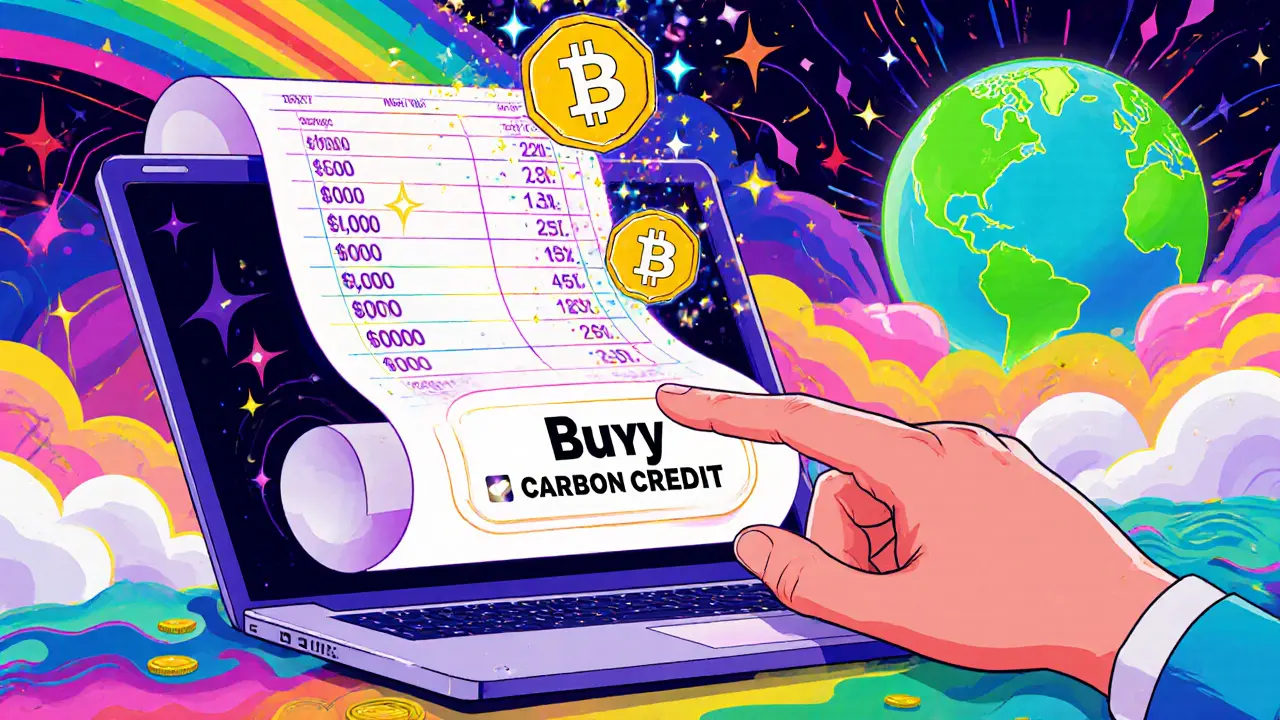Blockchain Carbon Offset
When dealing with blockchain carbon offset, the practice of using blockchain technology to record, trade, and retire carbon credits. Also known as crypto carbon credits, it blends transparency with environmental impact mitigation. A related core concept is carbon credits, certified units that represent one metric ton of avoided CO₂ emissions, which can be tokenized for easier transfer. Tokenization, the process of converting real‑world assets into blockchain‑based tokens, enables fractional ownership and instant settlement of these credits. Finally, verification standards, independent protocols like Gold Standard or Verra that confirm the legitimacy of emission reductions, are essential to keep the system trustworthy.
These four entities form a tight loop: blockchain carbon offset requires reliable verification standards, uses tokenization to make carbon credits liquid, and delivers transparent tracking for participants. In practice, a project that plants trees in Brazil can earn certified carbon credits, have them minted as NFTs on a public ledger, and sell them to a corporation that needs to meet ESG goals. The corporation’s purchase is recorded forever, and the token can be retired to prove the offset was used—no paper trail, no double‑counting.
Key Benefits and Real‑World Use Cases
First, transparency skyrockets. Every transaction is immutable, so auditors can trace a credit from the forest ranger’s field report to the final buyer. Second, accessibility improves because tokenized credits can be bought in tiny amounts, opening the market to individual investors who want to offset their personal carbon footprints. Third, speed matters—settlements that once took weeks now happen in seconds, letting businesses react quickly to regulatory changes.
Projects across the globe are already adopting this model. A solar farm in Kenya issues tokens that represent each megawatt‑hour of clean energy, while a maritime logistics firm purchases them to neutralize emissions from its fleet. Meanwhile, a DeFi platform integrates carbon offsets into its yield‑farm rewards, letting users earn interest while contributing to climate goals. These examples show how green finance, tokenization, and verification standards intersect to create a functional ecosystem.
But the space isn’t without challenges. Regulatory uncertainty can stall adoption; some jurisdictions still treat tokenized credits as securities. Additionally, the quality of verification matters—a credit backed by weak methodology can undermine the whole system. Users should therefore look for projects audited by reputable standards and verify that the underlying activity delivers real, measurable reductions.
For anyone curious about getting started, the first step is to pick a trusted marketplace that lists only verified tokens. Next, understand the retirement process: once a token is burned, the offset is considered used and can’t be resold. Finally, keep an eye on emerging standards like the Climate Ledger Initiative, which aims to harmonize data across blockchains and make cross‑project comparisons easier.
Below you’ll find a curated list of articles that dive deeper into each of these topics— from detailed tokenomics breakdowns to step‑by‑step guides on claiming airdropped carbon‑related tokens. Whether you’re a trader, an ESG analyst, or just someone who wants to offset a flight, the collection offers practical insight to help you navigate the growing world of blockchain carbon offset.
Carbon Credit Blockchain Projects: How Tokenization Is Changing Climate Finance
Explore how carbon credit blockchain projects tokenise emissions offsets, boost market liquidity, and bring transparency to climate finance.
